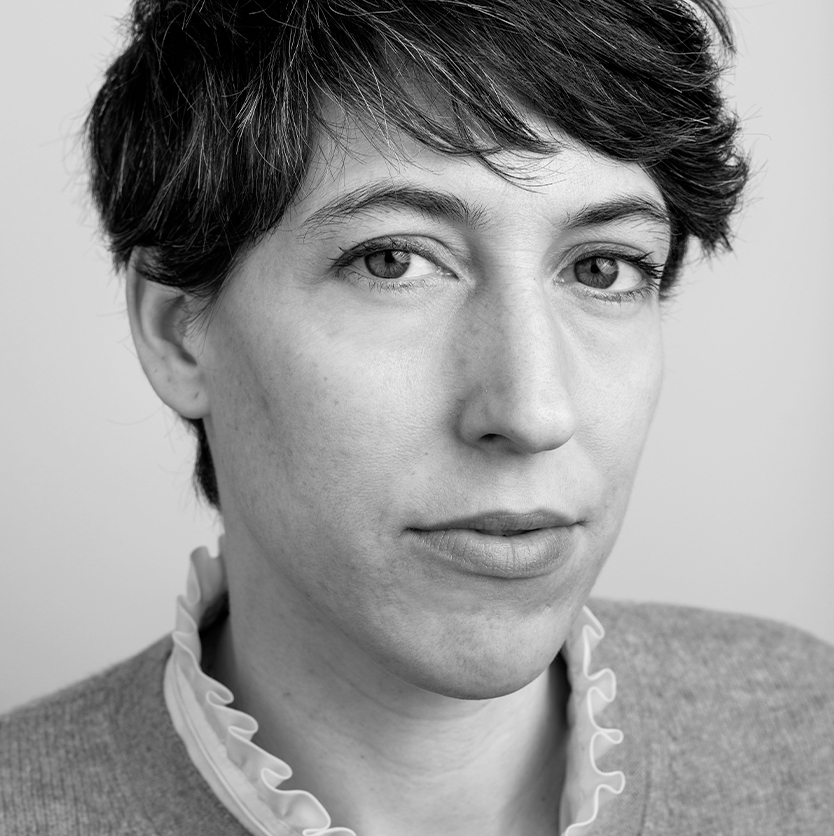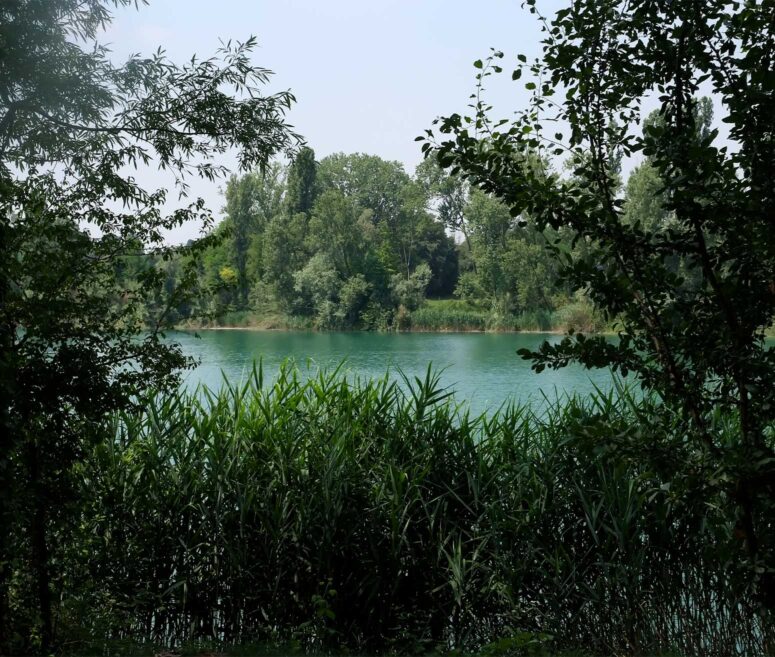On the occasion of the first cycle of events of Thinking Like a Mountain, the Argentinean artist Mercedes Azpilicueta (La Plata, 1981) presented Que este mundo permanezca [“May This World Remain”]: a new participatory performance dedicated to the theme of the rediscovery of natural spaces, the focus of GAMeC’s biennial program.
The performative action took place at the Oasi della biodiversità (Biodiversity Reserve) in Brembate, a naturalistic area at the heart of an environmental regeneration and recovery project deployed by the Nuova Demi company following the cessation of gravel and sand-quarrying activities. The company now carries out major conservation activities, such as water quality control, as well as study and research project, such as monitoring the bird species that have returned to populate the area.
For the conception of the performance, developed as part of the framework of the third edition of the ON AIR – Argentina-Italy Art Residency project, stemming from collaboration between GAMeC and the Fundación PROA in Buenos Aires, the artist was inspired by the peculiarity of this place, a quarry returned to nature, close to the Adda River, repopulated today by a great variety of plant and animal species. Here, the relationship between man and the environment finds a balance that the artist decided to investigate through performative action, featuring three birds of different species interpreted by three performers: Antonella Fittipaldi, who has already worked with Azpilicueta in the past, Nicola Forlani, and Aurora Rota, professional dancers and teachers at the Bergamo Art Academy.
As is often the case in the artist’s practice, the performance has been planned collectively, through meetings between the artist and the dancers, who will have the opportunity to experience the relationship with one another and with the environment with which they interact.
The action has been structured in several stages, tracing a path around the stretch of water at the center of the Oasis. Each stage took place in a different natural setting: from reeds to meadows, from woods to bird-nesting areas, allowing spectators to enter the Oasis and perceive the many aspects to it.
The artist focused on the study of three birds that inhabit it: the kingfisher, with its intense blue feathers; the green woodpecker, a migratory bird that is unusual to find in these areas; and the hoopoe, characterized by its black, white, and orange feathers. Studying the behavior and “personality” of the three birds, Azpilicueta prepared a “script” for each of them and shared it with the performers, who will take their cue from these traces to develop their own personal interpretation.
The colors of the plumage of the three birds have been the main element of the masks and cloaks that the artist has created especially for the occasion, together with costume designer Alberto Allegretti. Together with the gestures of the performers, they inspired positive feelings in the spectators, evoking the message that Azpilicueta intends to convey through her action: without wishing to evoke a romantic idea of nature, the three birds were the voices of the adaptive capacity of their species. As creatures that have had to face numerous changes and adverse situations such as industrialization, which has altered the face of the landscape, and develop new ways of living in the environment, they seem to come from another era to speak of possibilities, potential and transformations. Inspired by the vicissitudes of the Oasis and the species that inhabit it, Azpilicueta speaks of possible worlds and futures, in which alternatives to the degradation of nature may be put into practice.

Biographical Notes
Visual artist and performer from Buenos Aires, Mercedes Azpilicueta (La Plata, 1981) lives and works in Amsterdam. She habitually collaborates with archives, libraries, historians, dancers, textile designers, and urban planners to bring to life her layered installations, in which tapestries, free-standing sculptures, videos, objects and salvaged materials are combined with architectural elements. Azpilicueta’s works traverse history and geography to give voice to unheard and dissident figures from the past, stories, myths, and legends through which to explore the affective qualities and political dimension of language and voice, the processes underlying the formation of cultural memory and the construction of gender and subjectivity. Her work is manifested in performative and sculptural installations, inspired by speculative and fictional Latino literature, Neo-Baroque art history, contemporary popular culture, and new materialism theory. Through collaborative and interdisciplinary practices, she combines “precarious,” craft-based techniques—historically associated with domestic obsolete knowledge—with industrialized productions.



